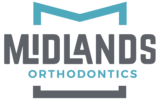Orthodontists treat dental problems known as malocclusions. These problems include crooked or crowded teeth, misaligned molars and jaw problems. Treating these dental issues may prevent later problems, such as gum disease, tooth decay, temporomandibular joint pain and speech disorders. They have the added benefit of improving one’s appearance.
Often, people who are looking for an orthodontist rely on recommendations from their dentist or from friends without really understanding what skills will obtain the best results. According to the American Association of Orthodontists, approximately 4.5 million Americans wear braces on their teeth. In the past, braces were usually worn by children and teens but today, one in four orthodontic patients is an adult. Depending on the circumstances, orthodontic treatment may be a big commitment of your time and resources. So naturally you want the best possible care.
What education is required for an orthodontist?
To be admitted to a dental school, an orthodontist must first earn an undergraduate degree. Then he or she must obtain a professional degree in dentistry. After finishing four years of dental school, an orthodontist must pursue a post-degree training program or a residency in orthodontics. After completing the educational requirements, before they can practice orthodontics, orthodontists must apply for a license from the state board of licensing. The licensing requirements vary from state to state. However, all orthodontists have to have a license to practice.
Beyond the education and licensing requirements, only one-third of orthodontists choose to complete the board certification. ABO board certification is a voluntary credential.
How does an orthodontist become board certified?
Board certification is the highest level of professional achievement for an orthodontist. The certification process involves written and oral testing. It also requires the oral defense of cases treated before an expert panel of examiners. In completing the process, the orthodontist must show accomplishments in actual patient care, which cover a wide range of orthodontic problems. The steps towards board certification are difficult and include:
-
Passing all written, oral and clinical exams required to become a Diplomate of the American Board of Orthodontics.
-
In addition to these examinations, orthodontists must submit case studies of patients they have treated with using the highest standards of skill and excellence in patient care.
-
The submitted orthodontic cases will be reviewed by an expert panel of other board certified orthodontists.
-
To maintain the certification status, the orthodontist must go through the certification renewal process to every ten years.
Why is a board certified orthodontist the best choice?
Board certification is a rigorous voluntary achievement and not all orthodontists choose to pursue it. Why is it important to choose a board certified orthodontist?
The only boarding organization for the orthodontic specialty that is recognized by the American Dental Association is the American Board of Orthodontics (ABO). The certification process developed by the ABO is a demanding program of examinations and peer review. A board certified orthodontist who completes this program has gone far beyond the state requirements for licensure. It involves additional education and a system of ongoing assessment. The orthodontist must demonstrate excellence in orthodontic knowledge, judgment and clinical skills. Board certification demonstrates an orthodontist’s commitment to the highest quality results and patient care.
The results of orthodontic treatment can last a lifetime. If you are seeking orthodontic treatment choosing a board certified orthodontist who can provide the best treatment and knowledgeable patient care will ensure the best possible outcome for your smile.
Dr. Herrington is a board certified orthodontist who is committed to continuing education in the field of orthodontics. Midlands Orthodontics uses the latest technological advances in orthodontic care to provide the highest quality of care for our patients. To make an appointment for a complimentary consultation, contact us at (803) 402-3838.

